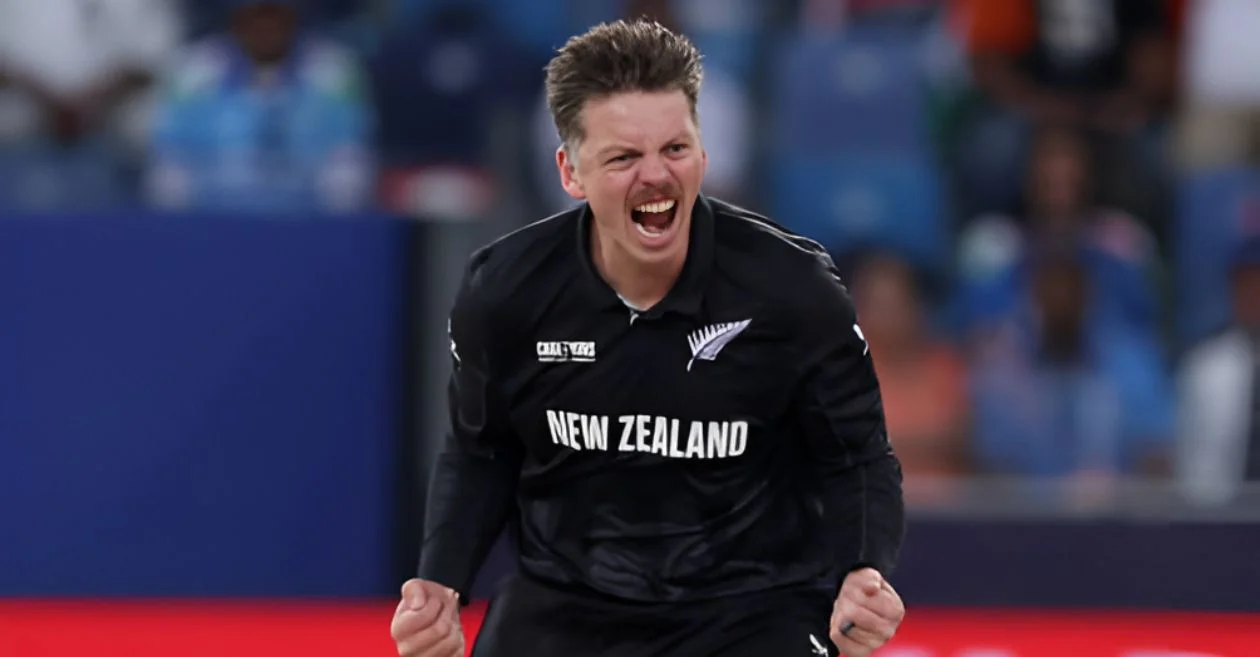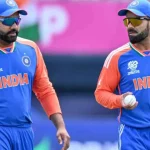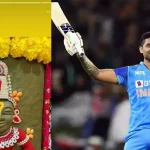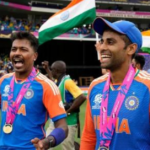New Zealand’s ODI squad has undergone significant changes ahead of their three-match series against Pakistan, as key players have been ruled out, and new faces have been drafted in. The biggest setback for the Black Caps came with the unfortunate injury to wicketkeeper-batter Tom Latham, who has been ruled out of the series due to a fractured right hand.
Latham’s absence has forced the team management to make crucial adjustments, with Henry Nicholls stepping in as his replacement. Meanwhile, young batter Rhys Mariu has earned his maiden call-up following the unavailability of Will Young, who will feature only in the first ODI before exiting the squad due to personal reasons.
With these changes, New Zealand is set to enter the series with a mix of experienced campaigners and exciting young talents. Here’s an in-depth look at how these developments will shape the team and their potential playing XI against Pakistan.
Tom Latham’s Injury: A Major Blow to New Zealand
Tom Latham’s absence is a significant setback for New Zealand. The left-handed batter has been a pillar of stability in the middle order and a trusted wicketkeeper for years. His experience and ability to anchor an innings were expected to play a vital role in this series, especially in subcontinent-like conditions where Pakistan’s spin attack thrives.
The injury occurred during a training session, and medical reports confirmed that Latham would need time to recover. His unavailability not only leaves a gap in the batting lineup but also means New Zealand must rely on an alternative wicketkeeper.
Henry Nicholls, a seasoned batter, has been called up to replace Latham. Though Nicholls does not keep wickets, he provides solidity to the batting lineup. He is expected to play an anchoring role in the top order, ensuring stability for the team.
Will Young’s Limited Availability and Rhys Mariu’s Maiden Call-up
Another key change in the squad is the introduction of Rhys Mariu, who has been called up as cover for Will Young. Young, originally set to play all three matches, will now only be available for the first ODI in Napier before leaving the squad for personal reasons.
Mariu, a promising batter from Canterbury, has impressed in domestic cricket with his aggressive stroke play and ability to adapt to different formats. His selection marks an exciting opportunity for New Zealand to test young talent at the international level.
With these adjustments in mind, let’s take a look at New Zealand’s potential playing XI for the ODI series against Pakistan.
New Zealand’s Best Playing XI for the Pakistan Series
1. Henry Nicholls (Left-handed opening batter)
Nicholls is set to return to the top order, where his ability to anchor an innings will be crucial. He has a solid technique against both pace and spin and is known for building partnerships. His ability to rotate strike effectively makes him a dependable choice for the opening slot, ensuring New Zealand has a strong foundation.
2. Nick Kelly (Left-handed opening batter)
After Young’s departure, Kelly is expected to step into the opening role. Known for his fearless stroke play, Kelly’s aggressive intent can help New Zealand capitalize on the powerplay. His performances in domestic cricket have been promising, and this series presents him with a golden opportunity to establish himself at the international level.
3. Daryl Mitchell (Right-handed top-order batter)
Mitchell is arguably New Zealand’s most reliable ODI batter. He has a well-rounded game and can switch gears as needed. Whether it’s stabilizing the innings or accelerating in the middle overs, Mitchell has proven to be a match-winner on several occasions. His experience in subcontinent conditions will be a huge asset against Pakistan’s bowling attack.
4. Mark Chapman (Left-handed middle-order batter)
Chapman is an attacking middle-order batter with an array of strokes. He brings aggression to the lineup and is capable of shifting the momentum in New Zealand’s favor. His ability to take on both fast bowlers and spinners makes him a key player at No. 4, especially in middle-over situations.
5. Michael Bracewell (C) (Left-handed all-rounder & off-spinner)
Bracewell, leading the side, will play a crucial role in both the batting and bowling departments. He has prior leadership experience and is known for his tactical awareness. With the bat, he can anchor the innings or play the finisher’s role, while his off-spin will be valuable in the middle overs.
6. Mitch Hay (WK) (Right-handed batting wicketkeeper)
With Latham ruled out, Mitch Hay will take on wicketkeeping duties. He is an exciting young talent who can play a stabilizing role in the middle order. His quick reflexes behind the stumps and ability to guide bowlers will be critical.
7. Nathan Smith (Right-handed batting all-rounder)
Smith provides balance to the side as a seam-bowling all-rounder. He has the ability to score quick runs in the final overs, making him a valuable lower-order batter. With the ball, he can swing both the new and old ball, making him effective in various phases of the game.
8. Jacob Duffy (Right-arm fast bowler)
Duffy will be leading New Zealand’s pace attack. His ability to move the ball early and his effectiveness in death overs make him a key bowler. His discipline and sharp variations could prove decisive against Pakistan’s batting lineup.
9. Ben Sears (Right-arm fast bowler)
Sears adds genuine pace to the attack and is known for hitting the deck hard. He can trouble batters with short-pitched deliveries and is expected to bowl aggressive spells. His ability to generate bounce makes him a tough bowler to handle, especially in Napier’s conditions.
10. Will O’Rourke (Right-arm fast-medium bowler)
O’Rourke will act as the first-change bowler, providing key breakthroughs in the middle overs. His height allows him to extract extra bounce, making him an effective weapon in New Zealand’s attack.
11. Adi Ashok (Right-arm leg-spinner)
Ashok’s leg-spin offers variety to New Zealand’s bowling unit. He is a wicket-taking option in the middle overs and can build pressure with his variations. If the pitch favors spin, Ashok could play a match-defining role.
Can New Zealand Overcome These Setbacks Against Pakistan?
Despite missing key players like Latham and Young (after the 1st ODI), New Zealand still has a well-balanced squad that can challenge Pakistan. The series presents an excellent opportunity for young talents like Rhys Mariu, Mitch Hay, and Adi Ashok to prove themselves on the international stage.
On the leadership front, Michael Bracewell will have the task of guiding the team through this transitional phase. With experienced campaigners like Mitchell, Nicholls, and Chapman in the batting order and a versatile bowling attack led by Duffy and Sears, the Black Caps will be optimistic about their chances.
The Pakistan series will not only test New Zealand’s depth but also shape their ODI squad moving forward. If the young players step up, the Kiwis might unearth new stars for the future.
The first ODI in Napier will set the tone for the series, and fans will be eager to see how New Zealand adjusts to these sudden changes. With a mixture of experience and youth, the Black Caps will look to make a strong statement despite the setbacks.
This series is more than just another bilateral contest—it’s a test of New Zealand’s squad depth and their ability to adapt under pressure. Can the Black Caps rise to the occasion? Only time will tell!
Please check for information on the best betting sites in India – https://selectory.org/best-betting-sites/















